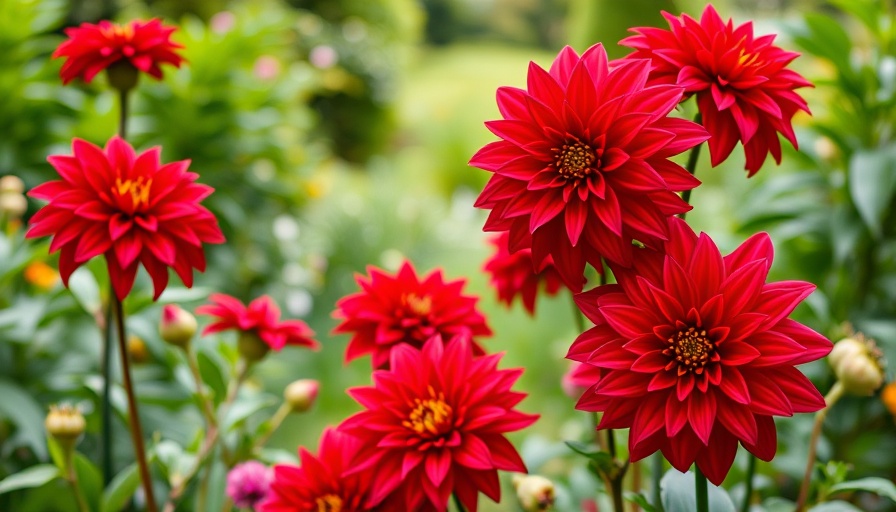
Revitalize Your Garden with Late Summer Blooms
The end of summer can often feel like a mundane transition. With muggy weather and pesky mosquitoes, it’s easy to overlook the beauty that still exists in our gardens. Yet, as many avid gardeners know, late summer is the perfect time to introduce some of the most vibrant flowering bulbs! Those looking to enhance their gardens can consider these stunning late summer flowering bulbs, which will not only extend your flowering season but also provide a splash of color when most summer plants have begun to fade.
Why Late Summer Flowering Bulbs are Essential
Late summer flowering bulbs play a crucial role in keeping the garden alive and colorful as the heat begins to dissipate. Many bulbs, such as Agapanthus and Gladiolus, bloom spectacularly in late summer and can even last into the fall, providing months of visual delight. This diversity in bloom times is particularly advantageous as it allows gardeners to enjoy a vibrant spectrum of colors throughout the changing seasons.
Highlighting 15 Stunning Late Summer Flowering Bulbs
Below are featured some of the best bulbs you can consider planting in your garden. Each of these varieties brings unique charm and flair to your home landscape:
- Agapanthus - Also known as African lily, it varies in shades from white to deep blue. Not only is it stunning, but it also attracts hummingbirds!
- Acidanthera - Known for its unusual white and purple flowers, it creates a lot of visual interest.
- Begonia - Perfect for adding a burst of color, these will thrive well into the late summer.
- Calla Lily - With its elegant silhouette, this perennial stands out beautifully.
- Canna Lily - Featuring broad leaves and vibrant flowers, this plant is a favorite for gardeners.
- Colchicum - Also called autumn crocus, will bloom even as fall approaches.
- Crinum - Deeply fragrant and hardy, these bulbs are worth the space in your garden.
- Crocus - A delightful hint of early spring, blooming again in late summer.
- Dahlia - Known for their large, intricate flowers, they can add a showy touch to any arrangement.
- Eucomis - Often called pineapple lily, these eye-catching flowers can go the distance with their late blooms.
- Gladiolus - A favorite for cut flowers, they come in a variety of colors.
- Hyacinth - These fragrant blooms are versatile and beautiful.
- Iris - A classic garden favorite, offering majestic blooms as summer fades.
- Nerine - With its striking, spider-like flowers, it adds drama to your garden.
- Ranunculus - Known for their rich colors and layered blossoms.
Preparing for Late Blooms: The Best Practices
To enjoy these blooms, it’s essential to plant most of these bulbs in the early spring. This ensures they establish themselves and are fully prepared for the summer growing season. Moreover, it’s vital to understand your local climate, especially if it’s prone to frost. Bulbs like Agapanthus can endure milder winters, whereas others may need protection or indoor storage during harsh weather conditions.
Enhancing Your Late Summer Blooms
In addition to selecting the right bulbs, consider incorporating companion planting strategies to keep pests at bay. Choosing pest-resistant plants can prevent infestations while simultaneously enhancing the beauty of your garden. To further invigorate your late summer garden, layering your planting design with varying bloom times and plant heights creates a stunning visual display.
Cultivating Connection Through Gardening
As you cultivate these late summer flowers, think about how gardening fosters community connections. Sharing tips, flowers, and harvests with neighbors can lead to positive relationships and create a mutual appreciation for local gardening. Whether it's swapping fresh blooms or sharing experiences over garden gates, the act of gardening brings people together, enriching our lives.
Step into Your Personalized Garden Journey
Explore these bulbs and embark on your own gardening adventure. Feel the joy of planting and nurturing your own late summer flowering bulbs. Embrace the thrill of self-sufficiency and reap the rewards of a visually stunning garden that provides joy long after the heat of summer has faded. You’ll find that your connection to nature and your surroundings deepens with every flower that blossoms!
Ready to bring more color into your late summer garden? Discover the beauty of late summer flowering bulbs today and get started on mastering your own floral oasis!
 Add Row
Add Row  Add
Add 




 Add Row
Add Row  Add
Add 

Write A Comment